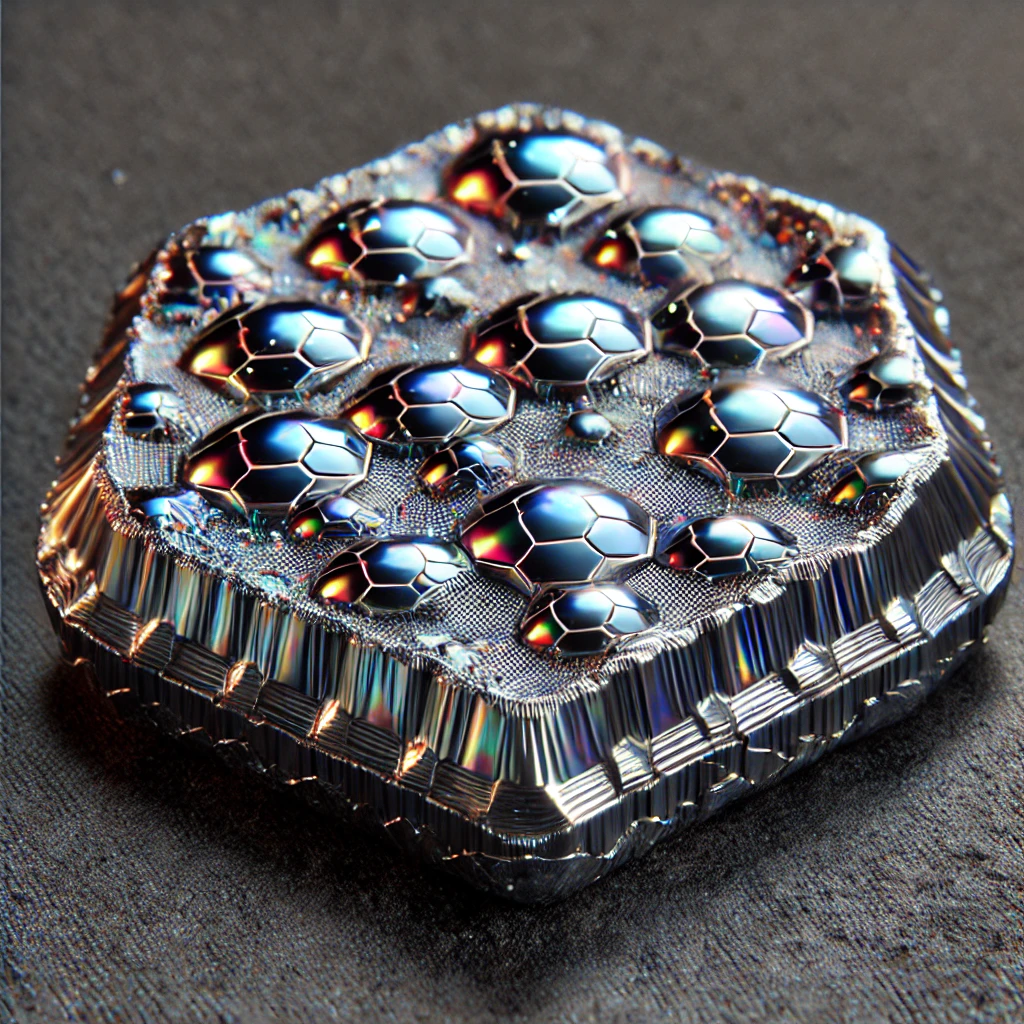Arts Part’s UFO Material Sample

“Arts Part’s UFO Material Sample” refers to a collection of UFO debris that was sent anonymously to Art Bell, the host of the popular late-night radio show “Coast to Coast AM,” in 1996. These samples were claimed to be fragments of an extraterrestrial spacecraft, specifically from the infamous Roswell crash in 1947. The sender, who identified himself as a former military operative named “Mr. X,” provided a letter with the materials, claiming they were given to him by his grandfather, who had been involved in the Roswell incident.
The fragments included various materials, such as pieces of metal and other unusual substances. Over the years, these samples have been subjected to various analyses and tests by different researchers and laboratories. Some tests indicated that the materials had unusual properties, such as being composed of bismuth and magnesium layers, which seemed to be of non-terrestrial origin due to their unusual isotopic ratios or unique construction.
Art’s Parts, a sample of UFO material, was analyzed visually by Mark Sokol, Jarod Yates, and Tim Ventura. The sample, which was provided to Sokol and Falcon Space for testing propulsion applications involving Dynamic Nuclear Polarization, exhibits unique reflectivity and structural properties not previously documented. Although the chain of custody for the sample is fully verified, the donor prefers to remain anonymous. The visual analysis revealed new features, including hexagonal structuring on the surface and potential micro- or nanostructures within the material itself. Future plans include scanning electron microscopy (SEM) analysis; however, due to the sample’s small size, isotopic analysis is unlikely.
Falcon Space is an independent research and development company involved in efforts to reverse engineer UFO technology, focusing on understanding the advanced propulsion mechanisms of Unidentified Aerial Phenomena (UAP). Dynamic Nuclear Polarization (DNP) is a key area of their research. This technique, traditionally used to enhance signal strength in MRI, is being explored for its potential in propulsion. By aligning the nuclear spins of atoms in materials like aluminum, Falcon Space aims to create propulsive forces, potentially leading to new, highly efficient methods of space travel
The sample consists of layers of magnesium, aluminum, and bismuth, each with distinct melting points. Magnesium and aluminum have relatively high melting points, while bismuth melts at a much lower temperature. The analysis revealed that the sample’s surface features hexagonal patterns, resembling a honeycomb structure, potentially for structural reinforcement or resonant frequency effects. This hexagonal pattern was not apparent before the crash and was likely a result of the impact and subsequent exposure to heat and oxidation. Additionally, the material displayed an iridescent quality with various colors, possibly due to embedded nanostructures reflecting different wavelengths of light. These properties are consistent with advanced materials used in aerospace applications, hinting at the potential for novel propulsion mechanisms involving Dynamic Nuclear Polarization (DNP). The ongoing research aims to further analyze these properties using advanced techniques like scanning electron microscopy to uncover more details about the sample’s composition and origins.
The analysis of the Art’s Parts sample revealed fascinating insights into its structure and potential functions. The material exhibits a layering pattern where horizontal layers of magnesium, aluminum, and bismuth are interspersed with vertical breaks, suggesting an internal microstructure not aligned with the visible boundaries. These breaks appear to cut across some form of invisible boundary within the material, rather than along the layer interfaces, indicating a sophisticated and likely intentional design.
The dark underside of the sample, primarily composed of bismuth, implies that this material was originally part of a larger structure. This side appears to have oxidized and darkened post-crash, while the other, lighter side remains more reflective. The presence of hexagonal patterns, resembling a honeycomb structure, was noted on the surface, possibly for structural reinforcement or resonant frequency effects. This honeycomb pattern, along with visible color speckles and iridescence, points towards an advanced method of constructing the material to optimize its properties for specific functions, such as waveguiding for electromagnetic fields.
Given the material’s composition, where bismuth layers can convert thermal energy into electrical energy, the researchers hypothesize that these layers could act as waveguides for low terahertz frequencies, which might then be upconverted to higher frequencies within embedded nanospheres. This could facilitate various advanced functions, including thrust generation and energy conversion, enhancing the material’s utility in aerospace applications.
The difficulty in replicating this material, as experienced by the Falcon Space team, underscores the advanced nature of its construction. The layers do not bond easily, and the specific arrangement of elements, potentially involving precise atomic placement, suggests a manufacturing capability far beyond current technology.
Overall, the detailed video and careful manipulation of light and lenses provided a deeper understanding of the Art’s Parts sample, revealing a highly complex and possibly advanced material that warrants further investigation using more sophisticated analytical techniques.

